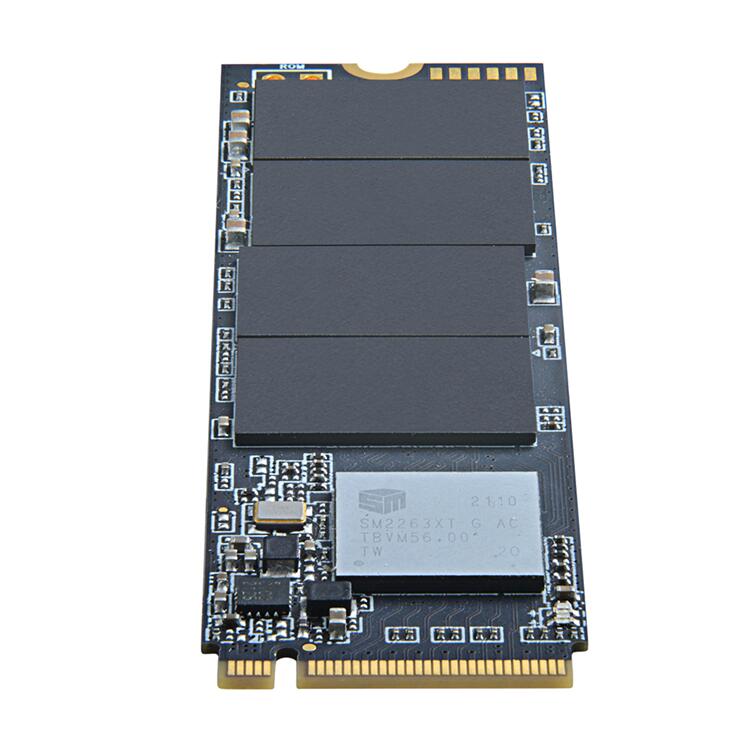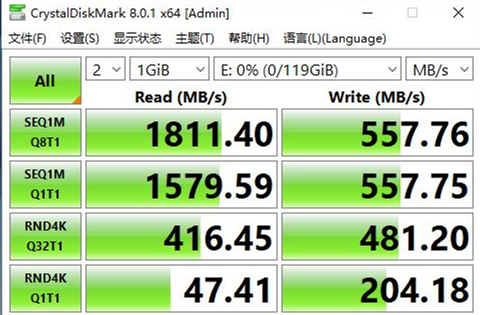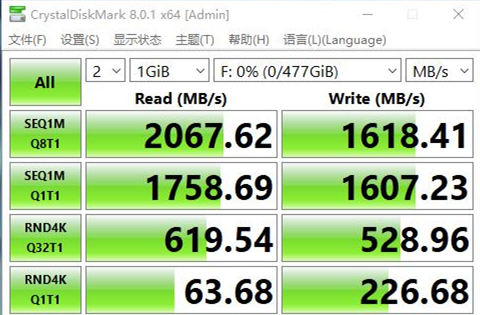M.2 NVME SSD
128GB/256GB/512GB/1TB
- Form factor M.2 2280
- PCIe Gen3 x4 lane and NVMe 1.3
- Faster system start-up and shut down time
PCIe NVMe M.2 2280 Internal SSD
M.2 2280 NVMe 1.3 PCIe Gen3x4 Solid State Drive
- Interface: M.2 2280, PCIe Gen3 x 4
- Low-Density Parity-Check (LDPC) Code
- Global Wear Leveling
- Flash bad-block management
- Flash Translation Layer: Page Mapping
- Support S.M.A.R.T. and TRIM
Capacity:

Know Before M.2 NVMe SSD Purchasing
The NVMe interface is almost like as the NGFF and NVMe interface. Please pay more attention to the distinction before purchasing, and try to confirm that the computer has an m.2 NVMe SATA interface so as to avoid unwanted purchasing errors.
M.2 NVMe

M.2 SATA NGFF

mSATA

Why Choose SSDEER.COM For M.2 NVMe SSD?
Say hello to GB/s : The Next Evolution of Solid State Drives. We always aim at producing and delivering quality SSD solid-state drives that meet all your needs.
DH-NE 80mm (2280) M.2 PCIe 3.0 x4 NVMe SSDs are changing the conversation from MB/s to GB/s – unleashing sequential read/write speeds over 4X faster than SATA SSDs at a blistering 2GB (2,000MB/s) and 1.7GB/s (1,700MB/s) respectively.
With 12 years of experience, Deer Hunter is well versed in this field. Yes, you are dealing with masters. You can trust them with your needs and expectations.
Need proof? Why don’t you contact us and we can schedule a zoom inspection session for you. We do not promote physical inspection at the moment because of the COVID-19 pandemic. However, this activity will resume as soon as the pandemic is over.
- We are certified; Deer Hunter is CE and FDA approved.
- We will ensure that we only provide you with high-quality SSD.
- Our SSDs are three year warranty supported.
- We, as a brand, are genuine in all our dealings.
- We can give you OEM/ODM service.
Want to know how we can do business? Let’s talk!
What Is M.2 PCIe NVMe SSD?
Short for Non-volatile Memory Express, NVMe is a new technology utilized by some M.2 drives. This blazing-fast new bus type uses the PCIe data transfer lanes on the motherboard, similar to modern graphics cards.
It is important to remember that NVMe itself is not a connection type but rather a protocol that utilizes a pre-existing PCIe connection. For the sake of abbreviation and simplicity, you may often hear NVMe protocols referred to as connections. The small size and fast speed of NVMe drives have been a massive leap in storage technology, rapidly becoming a standard on modern devices.
With each new generation of NVMe SSDs, storage size is increasing along with transfer speeds. Newer motherboards even support multiple NVMe devices, almost eliminating cable clutter entirely.

Product Parameters For M.2 NVMe PCIe SSD
Applications
- Mainstream SSD for Tablets, Ultrabooks, Hybrid Notebooks, and Desktop PCs.
- Cost effective HDD replacement for better overall performance
Technical Specifications
Features
- Sequential Read of up to 2000MB/s and Write of up to 1700MB/s
- Ultra-compact m2 2280 NVMe SSD goes through extensive compatibility and reliability testing
- Boost a variety of computing applications like gaming, HD media playback, creative software
- 3-year limited warranty, you can confidently trust us for years of data storage expertise
- Low power consumption, cool and quiet operation
请提供一个有效的CSV文件.
Our Advantages For M.2 NVMe PCIe SSD
Deer Hunter’s DH-NE is an NVM Express SSD designed as the standard M.2 form factor with PCIe interface and 3D TLC/QLC NAND Flash. Capacity options are 128GB, 256GB, 512GB and 1TB. DH-NE supports PCIe Gen 3 x4 lane, and it is compliant with NVMe 1.3 providing excellent performance. DH-NE with heat-spreading design dissipates heat generating from IC making SSD perform more stably. With sophisticated error detection and correction (ECC) functions, the module can ensure full End-to-end Data Path Protection that secures the data transmission between the host system and NAND Flash.

Carefully Selected 3D NAND Flash Solution
Super-fast SSD with innovative 3D NAND flash that shows unprecedented speed.

PCle Gen 3 x 4 Lane Interface
Delivers up to 6 times faster read/write speeds than SATA SSD with NVMe solutions.

Amazing Performance Of NVMe 1.3 interface
Exhibits excellent performance that surpasses the existing SATA storage.

Intelligent SLC Caching Algorithm
Enhanced durability and read/write performance with the application of SLC(Single Level Cell) caching technology.

Understanding the PCIe interface
PCIe (or PCI Express®) is a much faster interface than SATA (or Serial ATA) for connecting a host computer to solid-state storage devices over one or more lanes consisting of one transmit and one receive serial interface in each lane, meaning it can better fulfill new performance requirements.
Industry Leading NVM Express® (NVMe) Standard
NVMe (or NVM Express®) is a host controller interface standard designed to address the needs of enterprise and client applications that utilize PCI Express-based solid-state storage. NVMe calls for better performance vectors than AHCI (Advanced Host Controller Interface), including scalable bandwidth, increased IOPS, and low latency.


Sigle sided design
Featuring a thin single-sided M.2 2280 form factor, our NVMe SSDs increase storage capacity while saving space for other components in any ultra-portable laptop or desktop workstation with an M.2 connection.
Guaranteed quality
To ensure the utmost level of quality, Transcend SSDs undergo rigorous testing at all stages of production, including tests for vibration, temperature and humidity, speed, and functionality.

Practical Testing Gives You Original Data
- All performances are only for reference. The actual data might be influenced by different configurations, such as interface types, PC models, operating systems, testing platforms, etc.
- Some of the below listed capacities are used for formatting and other functions, not all for data storage. The actual available storage will be lower than the specification listed on the product.

128GB

256GB

512GB

1TB
请提供一个有效的CSV文件.
Notice:
- According to the international standard 1000KB=1MB ,the real capacity =Capacity x 0.93, please notice that .
- Before you use this NVMe SSD, please right click "My computer-Management-Device manager-disc drive" and can find our SSD. Please do the format and partition .
FAQs About M2 NVMe SSD From Us
PCIe NVMe M.2 2280 Internal SSDs are an ideal choice for transforming the performance of any hard-drive based laptop or PC. The small M.2 2280 form factor saves space without sacrificing performance, even with limited chassis or motherboard space.
Deer Hunter has been wholesaling solid state drives for 12 years and we have encountered all kinds of problems, here are the most important concerns of our customers before business.

M.2 is an SSD form factor, designed to work with the M.2 ports on your motherboard. The original name for M.2 was Next Generation Form Factor (NGFF).
Peripheral Component Interconnect Express (PCIe) is a high-speed expansion serial bus standard originally developed for use with graphics cards. This standard enables very fast transfer speeds between your motherboard and the PCIe SSD.
Non-Volatile Memory Express (NVMe) is a protocol designed to optimize communication with non-volatile memory media (such as NAND flash and Persistent Memory). The low latency and parallelism inherent in the protocol make NVMe SSDs the fastest in the consumer SSD market.
Pronounced m dot two and formerly known as the Next Generation Form Factor (NGFF), is a specification for internally mounted computer expansion cards and associated connectors. M. 2 replaces the mSATA standard, which uses the PCI Express Mini Card physical card layout and connectors.
Well, the significant difference between the M.2 2242 and M.2 2280 lies in the measurement of the SSD drives. Of course, this difference translates into further differences ahead. We will have a look at them as well.
The length of the SSD drive has a significant bearing on the performance characteristics of the SSD. Given this fact, since the M.2 2242 is smaller than the M.2 2280, the performance of the latter will be a little better placed in comparison to the M.2 2242.
Another area that the M.2 2280 takes the lead over the M.2 2242 is on the heat dissipation. The limited length of the M.2 2242 may not provide adequate heat dissipation. The M.2 2242 SSD drives are used in laptop motherboards, while the M.2 2280 drives find themselves being used in tablets.
Yes, much faster. The theoretical SATA cap is around 600 MB/s. PCIe speeds generally start at 1000 MB/s and go as high as 4000 MB/s, depending on the number of channels.
M.2 is the physical form factor. SATA and PCIe are different bus standards used to communicate with the motherboard. An M.2 PCIe SSD will be much faster than an M.2 SATA SSD.
No, they are generally about the same. The only difference is form factor.
PCIe generation 3, 4 channel. The higher the channels, the higher the throughput (speed). If the host device only supports 2 channel, the SSD performance will be limited to 2 channel. Please read your motherboard or system manufacturer documentation to determine the channel support.
Please read your motherboard or system manufacturer documentation that came with your computer. It will inform you about the type(s) of ports available on your motherboard and thus what SSDs you can use. You cannot tell just by looking at the port.
Can I use the M.2 form factor in my computer?
Please read your motherboard or system manufacturer documentation that came with your computer. It will inform you about the type(s) of ports available on your motherboard.
DH-NG SATA III M.2 2280 SSDs are "B&M key". It will fit in a PCIe NVMe M.2 socket or a SATA III M.2 socket.
2280 refers to the physical dimensions of the M.2 SSD. 22 means 22mm wide while 80 means 80mm long. 2280 is the most common consumer M.2 SSD size.
Our M.2 NVMe SSDs are single-sided.
M.2 SSDs were not designed to hot swappable/pluggable. Please follow the installation instructions located in your product box.
No, both M.2 SATA and M.2 PCIe use drivers natively found in the operating system of your host device.
Please read your motherboard or system manufacturer documentation that came with your computer. It will inform you about the type(s) of ports available on your motherboard. The two most important factors to consider when selecting a compatible SSD is protocol and form factor.
What is an SSD?
Solid State Drive. An SSD is a solid state drive that employs flash memory and used for all of your data storage needs. Compared to a traditional mechanical hard disk drive (HDD), SSDs do not have moving parts, generate less heat, use less power, and offer higher performance.
With transfer speeds far superior to mechanical hard disk drives (HDD), SSD benefits include: decreased system boot time, more efficient multi-tasking, and faster system responsiveness. SSDs offer significant performance improvements when replacing your current system’s hard drive (HDD), greater shock resistance, reduced power consumption, and longer battery life for laptop applications.
Yes, as long as your host computer has at least two available interface ports. The interface type will depend on the host computer and SSD. Refer to your motherboard documentation for additional information.
Our SSDs function independently of the host computer's operating system.
Yes, please follow the instructions provided by your OS to create a bootable system drive.
The host interface is how your SSD will connect with your host computer. Most external SSDs connect via USB or Thunderbolt III, while internal SSDs connect via SATA III or PCIe interfaces. For additional information on your host computer's host interface, please refer to the host computer's motherboard documentation.
Serial ATA. This is an interface between the SSD and the host computer. Our SSDs use the current generation SATA III, which is an 6 Gb/s backwards compatible interface. Many PCs utilize this interface as it became popular in the early 2000s and many PCs are still made with this interface today.
S.M.A.R.T., an acronym for Self-Monitoring, Analysis, and Reporting Technology, is an open standard that allows a hard disk drive to automatically detect its health and report potential failures. When a failure is recorded by S.M.A.R.T., users can choose to replace the drive to prevent unexpected outage or data loss. Moreover, S.M.A.R.T. can inform users of impending failures while there is still time to perform proactive actions, such as copy data to another device. S.M.A.R.T. is a feature of our SSDs.
Terabytes Written (TBW) is defined as the total amount of data in terabytes that can be written to a SSD before the SSD may begin to become unreliable. The SSD’s remaining life metric determines remaining SSD life span by comparing the SSD’s maximum TBW rating to actual terabytes written. Verbatim SSDs covered by this warranty have maximum TBW ratings that can be accessed on the respective product specification sheets located at www.verbatim.com. The SSD’s remaining life begins at 100% and will decrease to zero (0%) as the end user utilizes the SSD.
Mean Time Between Failures. An electronics industry metric that predicts elapsed time between inherent failures of a mechanical or electronic system, during normal system operation.
Input/Output Operations per Second. This is an industry standard metric that measures the random read/write performance of simultaneous inputs/outputs based using a 4k block size. The higher the IOPS the better the performance.
Deer Hunter offers a Limited Three Year Warranty up to the Terabytes Written (TBW) rating for our internal SSDs.
Our SSDs are intended for use in client PC applications, and are not intended for server environments.
Request A Free Quote
Or call us directly to discuss more details.
We'd like to work with you
Send us a message if you have any questions or request a quote. Our experts will give you a reply within 24 hours and help you select the right SSD you want.
- +86 13823789007
- sales@cndeerhunter.com

